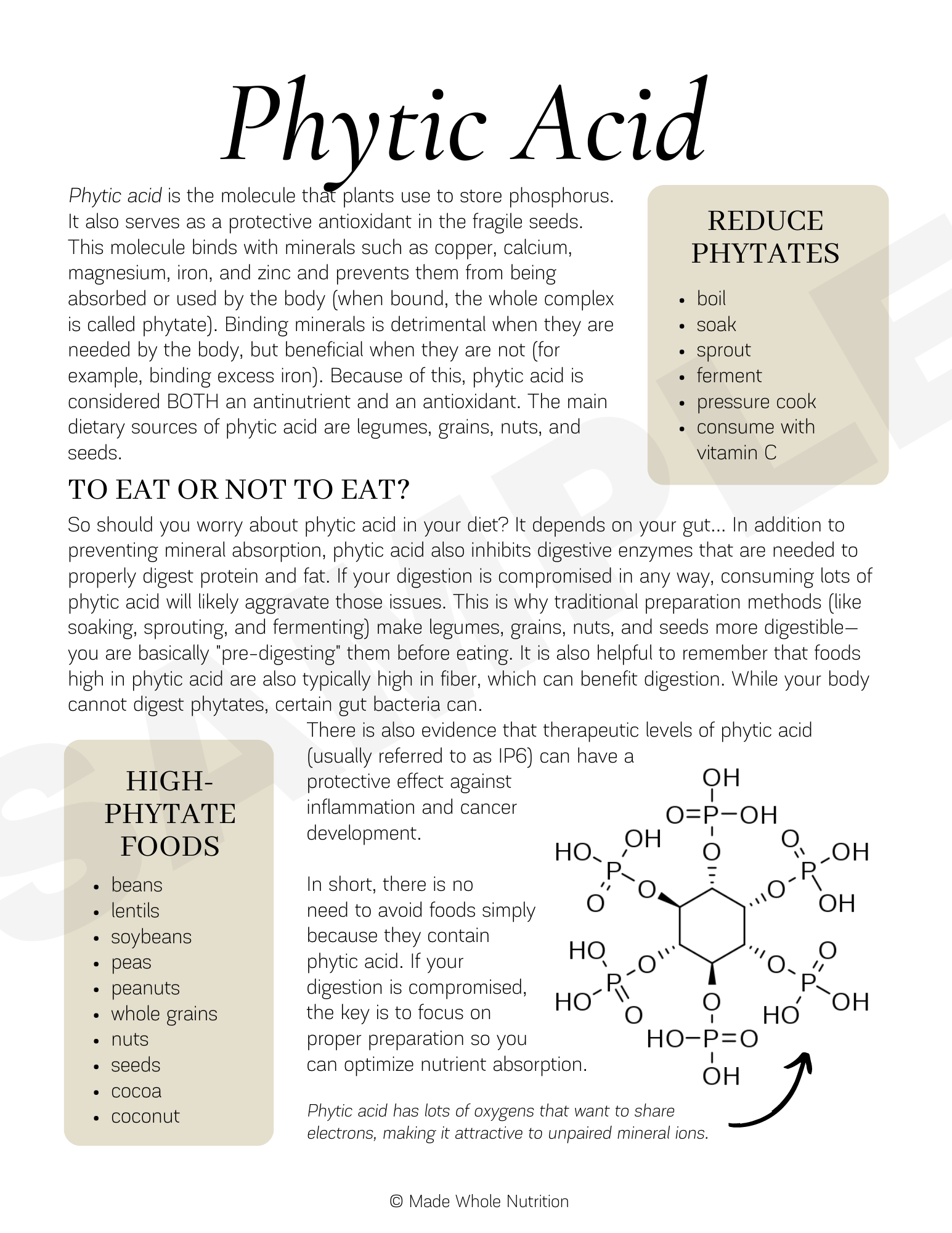PHYTATES: to eat or not to eat?
WHAT IS PHYTIC ACID?
Phytic acid is the molecule that plants use to store phosphorus.
The main dietary sources of phytic acid are legumes, grains, nuts, and seeds.
Phytic acid also serves as a protective antioxidant in fragile seeds.
HIGH-PHYTATE FOODS
beans
lentils
soybeans
peas
peanuts
whole grains
nuts
seeds
cocoa
coconut
ANTINUTRIENT & ANTIOXIDANT
This molecule binds with minerals such as copper, calcium, magnesium, iron, and zinc and prevents them from being absorbed or used by the body (when bound, the whole complex is called phytate).
Binding minerals is detrimental when they are needed by the body, but beneficial when they are not (for example, binding excess iron).
Because of this, phytic acid is considered BOTH an antinutrient and an antioxidant.
TO EAT OR NOT TO EAT?
Should you worry about phytic acid in your diet?
It depends on your gut...
In addition to preventing mineral absorption, phytic acid also inhibits digestive enzymes that are needed to properly digest protein and fat.
If your digestion is compromised in any way, consuming lots of phytic acid will likely aggravate those issues.
PHYTIC ACID & GUT HEALTH
Traditional preparation methods (like soaking, sprouting, and fermenting) make legumes, grains, nuts, and seeds more digestible— you are basically "pre-digesting" them before eating.
It is also helpful to remember that foods high in phytic acid are also typically high in fiber, which can benefit digestion.
While your body cannot digest phytates, certain gut bacteria can.
RESTRICTION IS NOT THE ANSWER
There is also evidence that therapeutic levels of phytic acid (usually referred to as IP6) can have a protective effect against inflammation and cancer development.
In short, there is no need to avoid foods simply because they contain phytic acid.
If your digestion is compromised, the key is to focus on proper preparation so you can optimize nutrient absorption.
Are you a health educator that wants to use this content with your clients? Customize the handout template in less time than it would take to even think about hiring a graphic designer.
References
Ballantyne, S. (2013). The Paleo Approach: Reverse Autoimmune Disease and Heal your Body. Victory Belt Publishing Inc.
Ballantyne, S. (2017). Paleo Principles. Victory Belt Publishing, Inc.
Petroski, Weston, and Deanna M. Minich 2020. "Is There Such a Thing as “Anti-Nutrients”? A Narrative Review of Perceived Problematic Plant Compounds" Nutrients 12, no. 10: 2929. https://doi.org/10.3390/nu12102929






